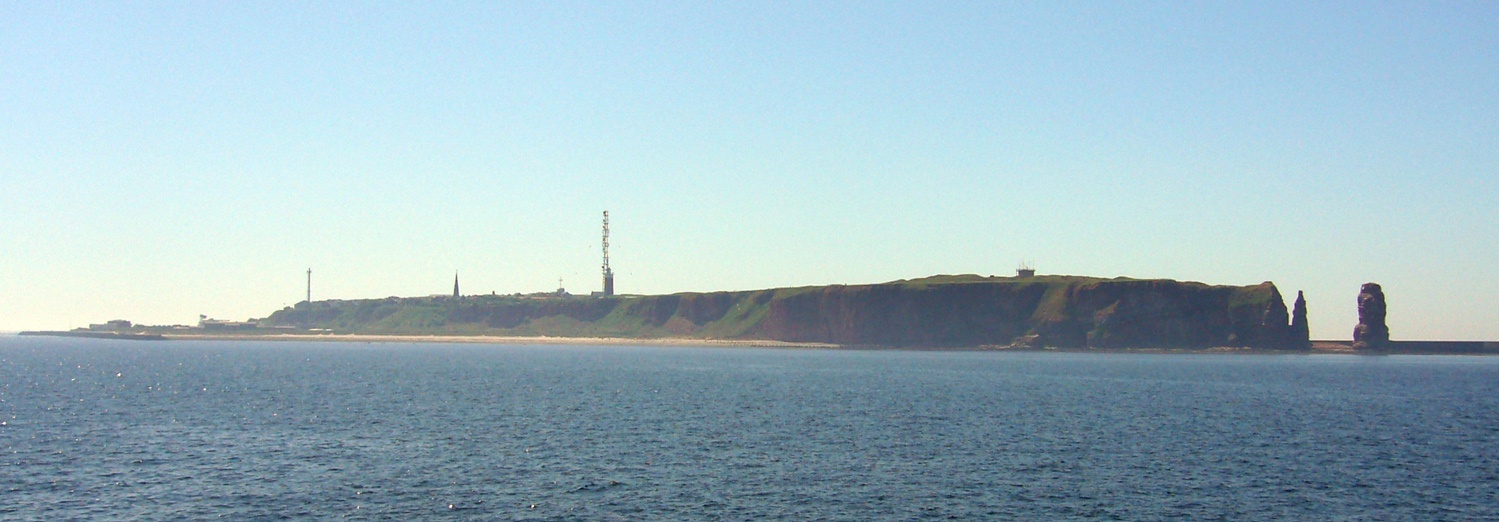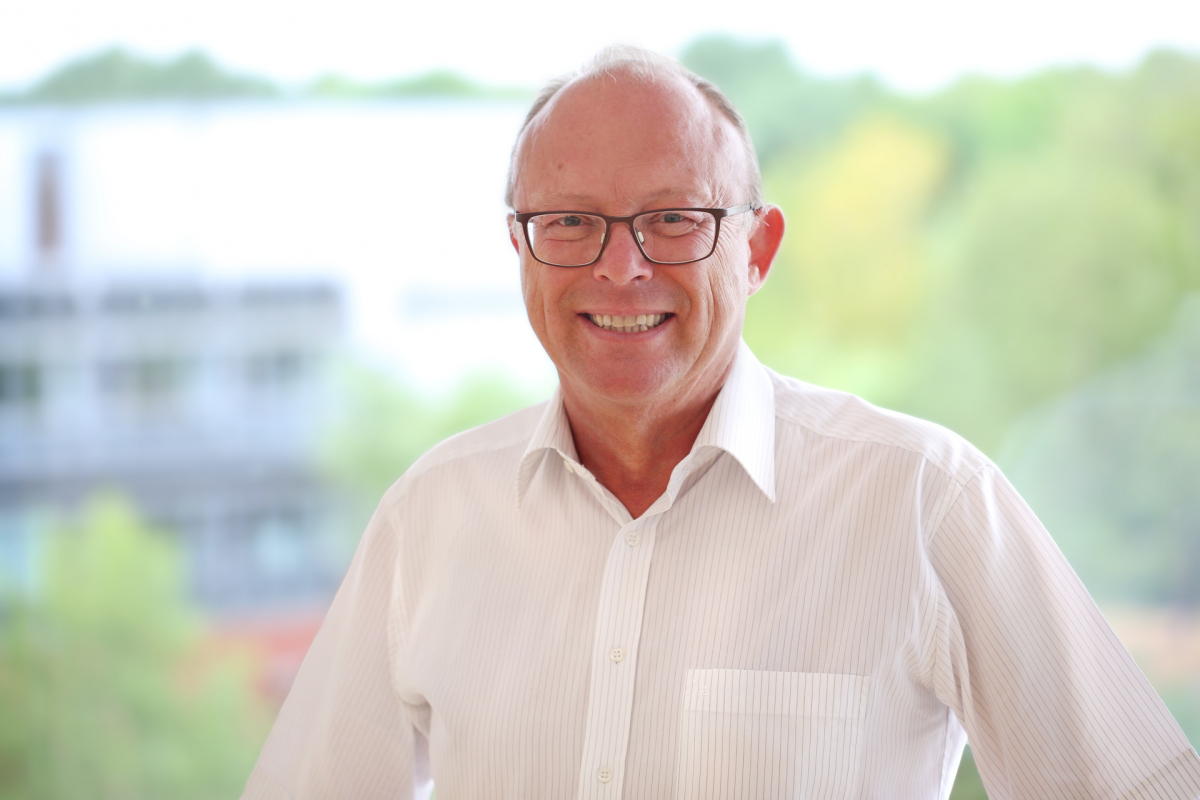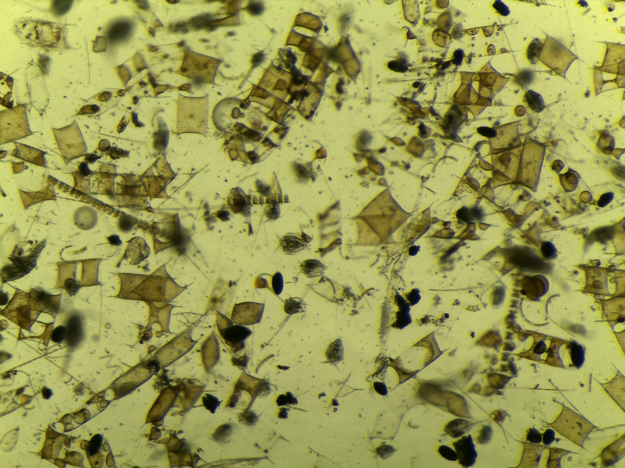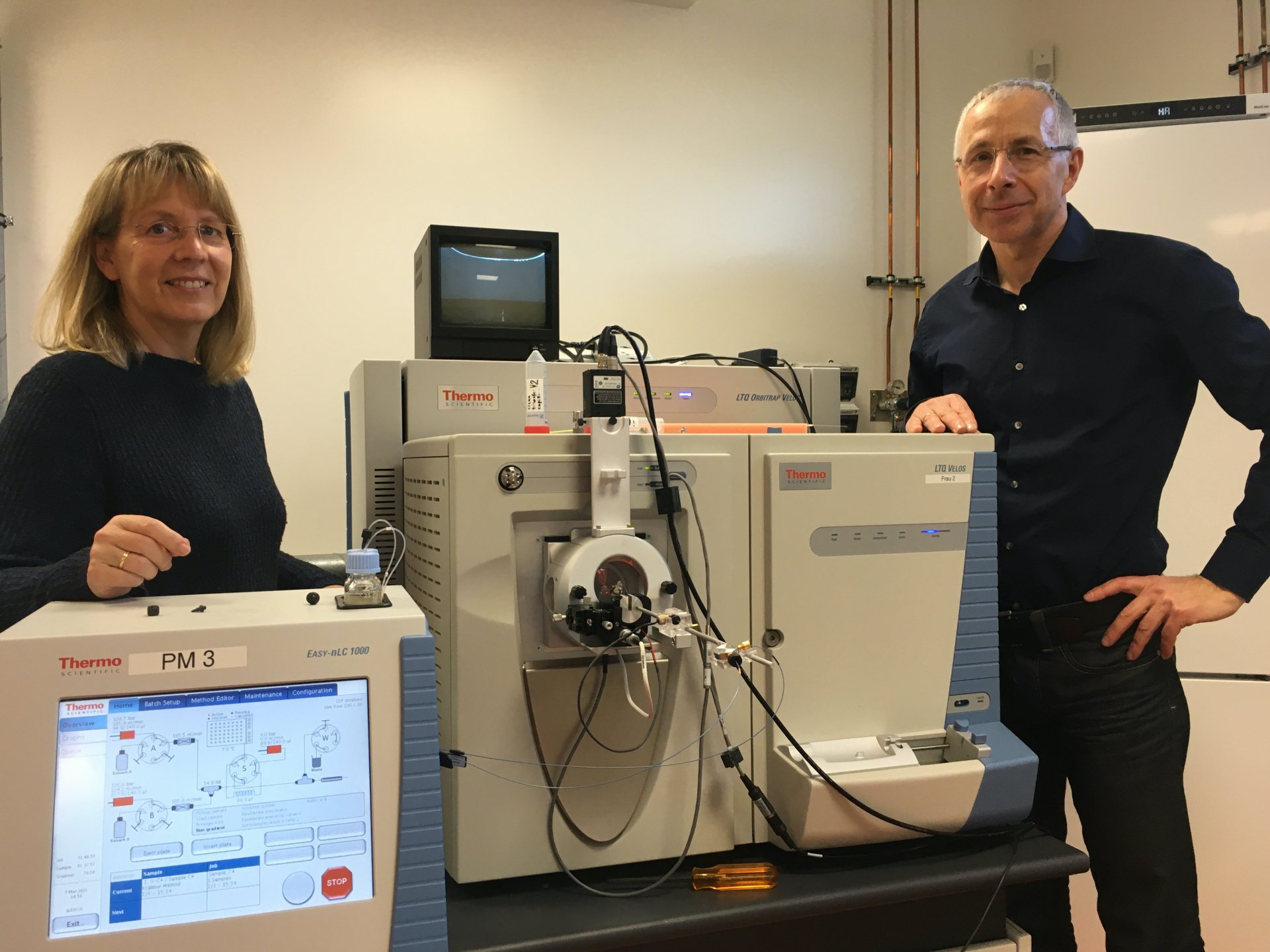- Press Office
- Press releases 2021
- First the treats, then the tough stuff: Bacteria have a dining plan when degrading algal blooms
First the treats, then the tough stuff: Bacteria have a dining plan when degrading algal blooms

The annually occurring algal spring blooms play an important role for our climate, as they remove large amounts of carbon dioxide from the atmosphere. However, they are an ephemeral phenomenon. Most of the carbon is released into the water once the algae die. There, bacteria are already waiting to finish them off and consume the algal remains.
Previous studies have shown that in these blooms, different algae can come out on top each year. However, within the bacteria subsequently degrading the algae, the same specialised groups prevail year after year. Apparently not the algae themselves but rather their components – above all chains of sugar molecules, the so-called polysaccharides – determine which bacteria will thrive. However, the details of the bacterial response to the algal feast are still not fully understood.
Metaproteomics: Studying bacterial proteins in bulk
Therefore, Ben Francis together with colleagues from the Max Planck Institute for Marine Microbiology, the University of Greifswald and the MARUM – Center for Marine Environmental Sciences at the University of Bremen now took a closer look at the bacterial insides. “We decided to center on a method called metaproteomics, which involves studying all proteins in a microbial community, in our case in the seawater”, Francis explains. “In particular, we looked at transporter proteins, whose activity is critical in understanding the uptake of algal sugars into bacterial cells.“ In the metaproteomic data, the scientists saw that these transporter proteins distinctly changed over time. “We saw a pronounced shift in the abundance of transporter proteins predicted to be involved in uptake of different types of polysaccharide”, Francis continues. “This indicates that the bacteria start off by mostly focusing on the 'easy to degrade' substrates, such as laminarin and starch. Then later on they move on and attack the 'harder to degrade' polymers composed of mannose and xylose.”
One sugar after the other
In other words, the bacteria take the easy road first, and only when the treats have been consumed, they aim for the chewy bits. When does this shift happen? Ben Francis and his colleagues see two possible triggers: It could either take place when competition for the easy food sources gets more intense, because the bacteria reproduce quickly in this lush environment and thus cell numbers increase. Or, alternatively, it depends more on the algae: Once the algal bloom breaks down and more algae have died, more of the hard substrates accumulate and they become a viable food source at that point.
Even though the scientists from Bremen and Greifswald have studied the dynamics of algal and bacterial blooms in the North Sea for a long time, this temporal course was something that had so far gone undetected. “Combining state-of-the-art proteomics techniques with sample preparation methods, which specifically consider the high complexity of these very challenging samples, enabled us to establish one of the most comprehensive proteome data set with more than 20 000 protein groups. These data revealed that substrate specificities of transporter proteins change over time. These changes were not visible in the corresponding metagenomic data set used to investigate bacterial diversity”, says Dörte Becher from the University of Greifswald. “It clearly shows that we need to dig very deep to understand the underlying ecological processes that govern marine carbon cycling.” Quantifying transporter proteins could indeed become an important piece in solving the highly complex puzzle of marine carbon cycling.
Combination of methods allows new insights
“This detailed 'meta-proteogenomic' study combines the exceptional expertise of the University of Greifswald in the identification and quantification of proteins in complex environmental samples with our expertise in molecular microbial ecology”, says Rudolf Amann, co-author on the study and director of the Max Planck Institute for Marine Microbiology in Bremen. “Our results indicate that the complex heterotrophic microbiome of the North Sea reacts to phytoplankton blooms not only in substrate-driven successions of recurrent bacterial species, but also in distinct changes of the expression of transporter proteins and degradative enzymes.” Ultimately, it will be the combination of various methods that will advance our knowledge of the molecules, enzymatic reactions, and rates underlying the marine carbon cycle, which is a prerequisite for predicting and managing atmospheric carbon dioxide levels.
Look behind the scenes in the corresponding blogpost by Ben Francis:
Original publication
Ben Francis, Daniel Bartosik, Thomas Sura, Andreas Sichert, Jan-Hendrik Hehemann, Stephanie Markert, Thomas Schweder, Bernhard M. Fuchs, Hanno Teeling, Rudolf I. Amann, Dörte Becher (2021): Changing expression patterns of TonB-dependent transporters suggest shifts in polysaccharide consumption over the course of a spring phytoplankton bloom. The ISME Journal 2021
Participating institutions
Max Planck Institute for Marine Microbiology, 28359 Bremen, Germany
Institute for Microbiology, University of Greifswald, 17487 Greifswald, Germany
Institute for Pharmacy, University of Greifswald, 17487 Greifswald, Germany
Institute of Marine Biotechnology e.V., 17489 Greifswald, Germany
MARUM, Center for Marine Environmental Sciences at the University of Bremen, 28359 Bremen, Germany
Contact:
Managing Director
Department of Molecular Ecology
MPI for Marine Microbiology
Celsiusstr. 1
D-28359 Bremen
Germany
|
Room: |
2221 |
|
Phone: |

Head of Press & Communications
MPI for Marine Microbiology
Celsiusstr. 1
D-28359 Bremen
Germany
|
Room: |
1345 |
|
Phone: |

Executive Director
Microbial Proteomics
Prof. Dr. Dörte Becher
Institute for Microbiology
University of Greifswald, Germany
Phone: +49 3834 420 5903
E-Mail: [Bitte aktivieren Sie Javascript]

